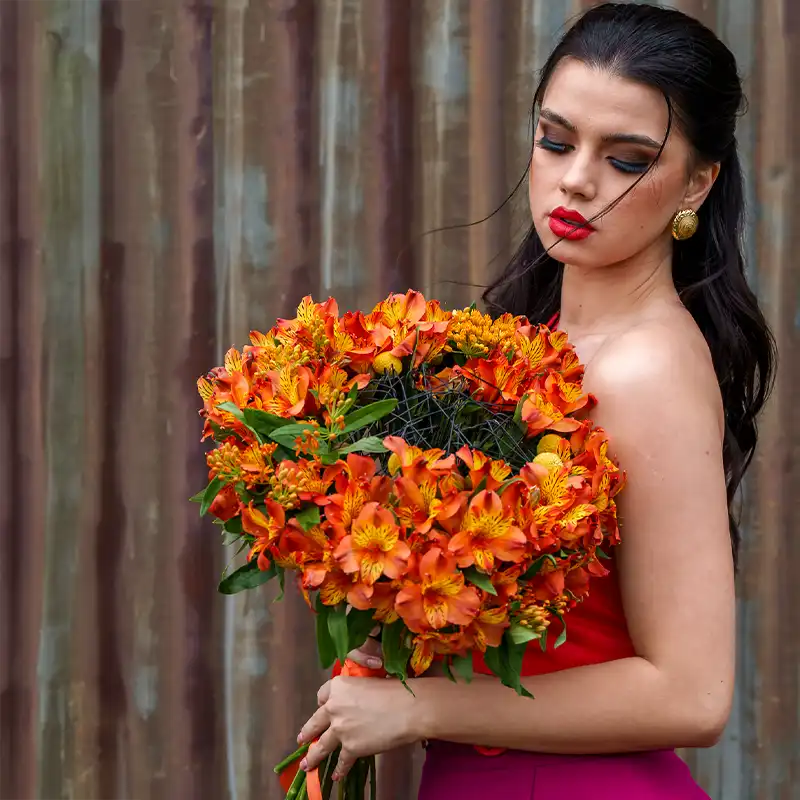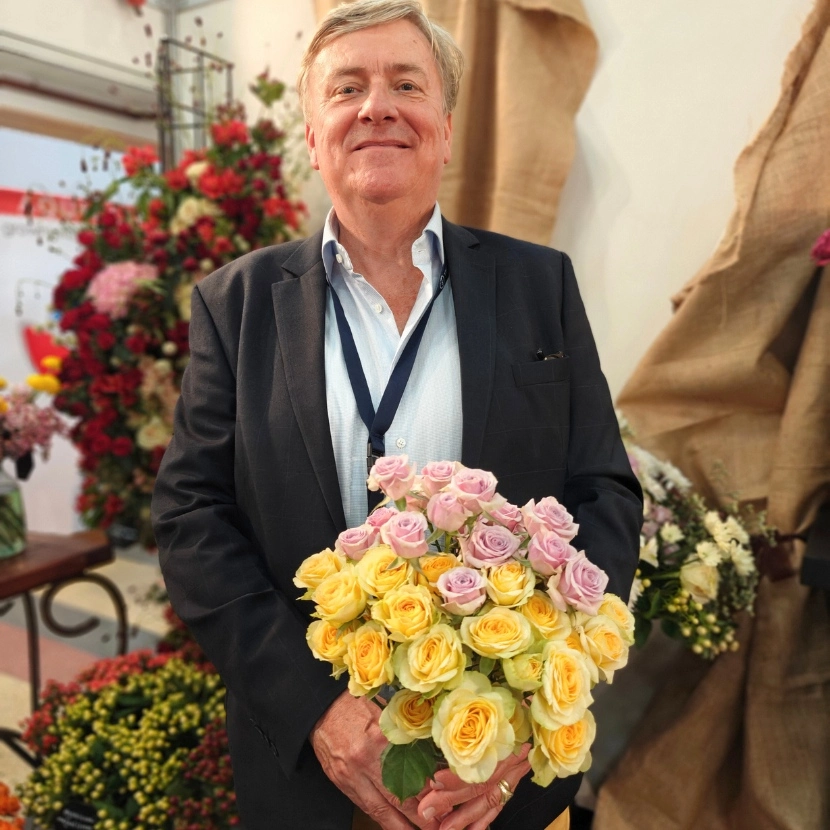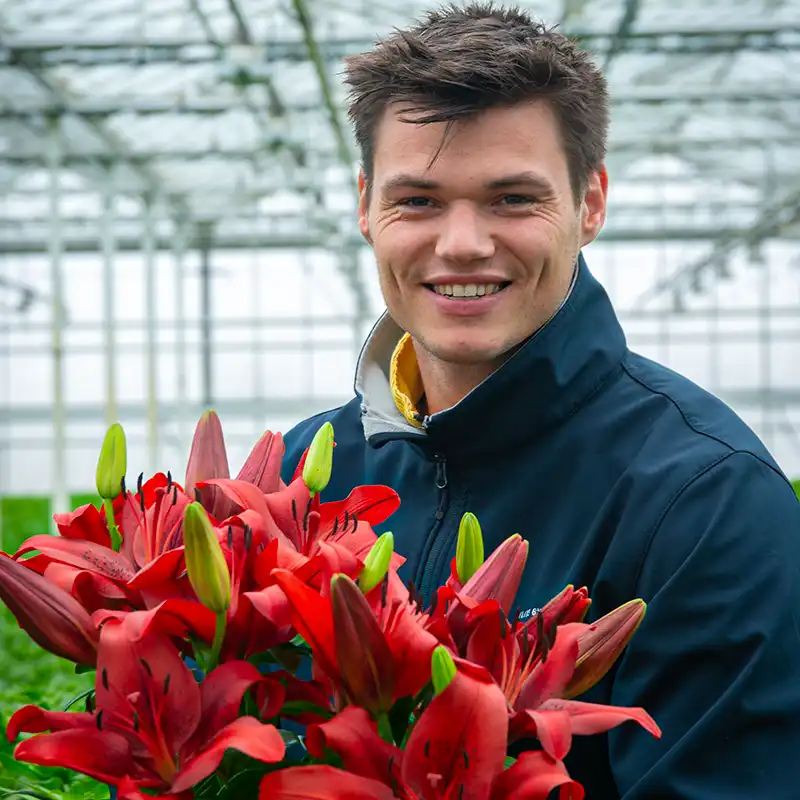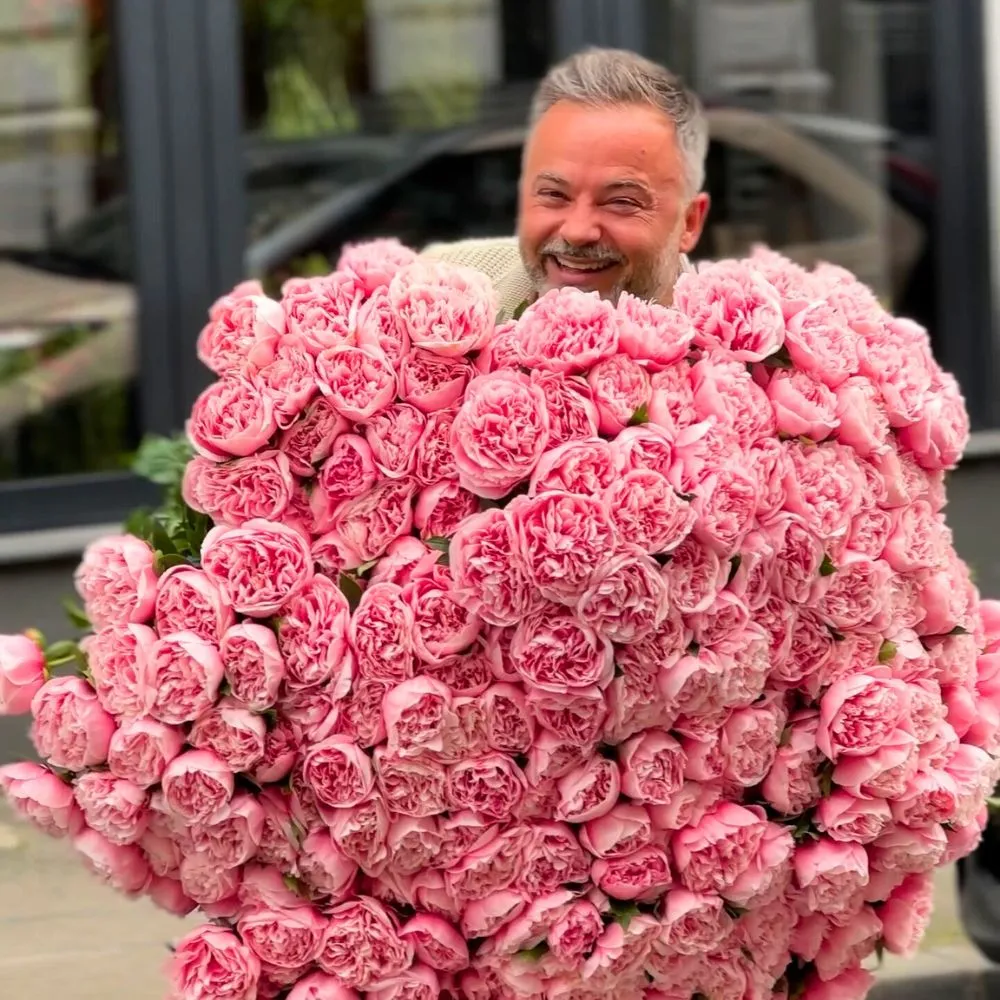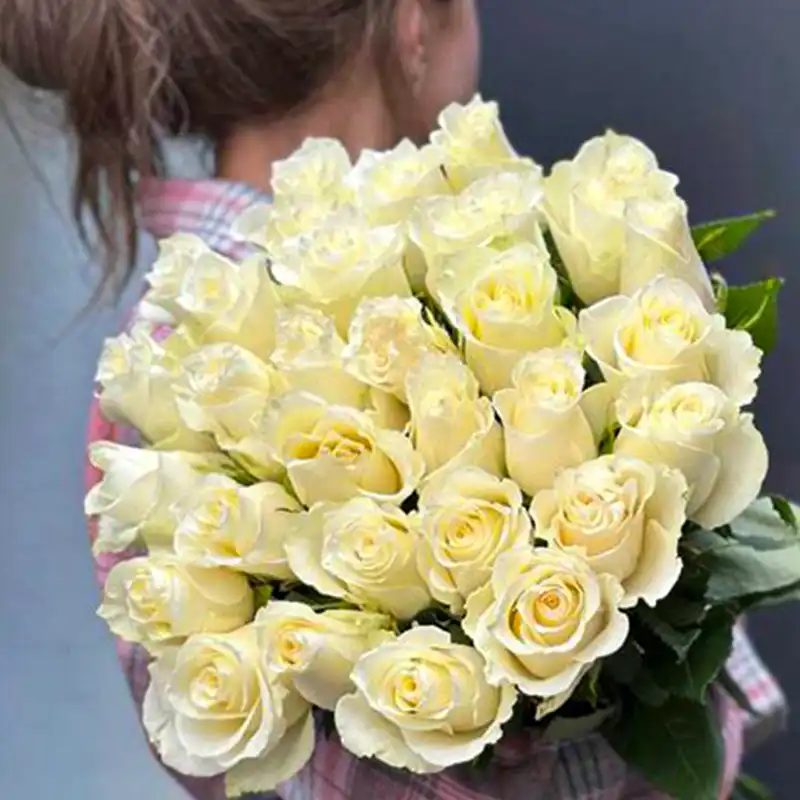Since 2006 Tom de Ridder is the Head of Flower Buying at Van Vliet Flower Group. He explains how a flower wholesaler looks at the maturity stages of flowers. Van Vliet has a worldwide spread clientele, from wholesale importers to their own cash & carries. This means that the company has to look at the ripeness of flowers from various perspectives. 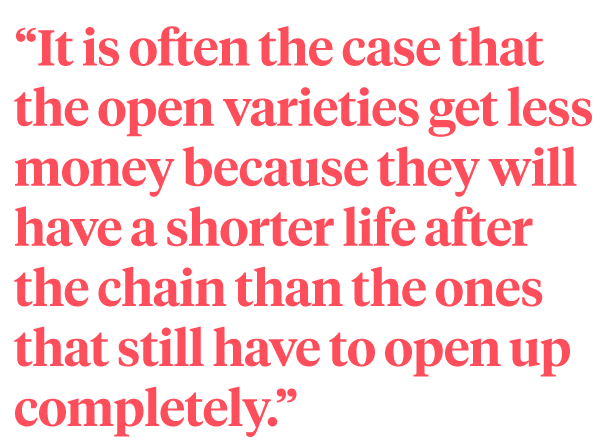
What is generally the ideal stage of ripeness for flowers that are not usually harvested in full bloom?
As an example, I show you this picture with sunflowers. These are ideal for us to transport to the customers because they still have to open completely and can therefore be on the way for a while.Customers of the cash & carries can also work with this for a long time because these flowers open slowly. Therefore, there is still enough time to process them in bouquets.
Are you generally satisfied with the ripeness stages of those types of flowers as you now receive them?
Yes, I am. It does depend on the information we are given during the auctioning. As long as this information is reliable and does not deviate from what we receive it is fine. Flowers should not be open when auctioned at maturity stage 1-3 or 2-3.
What is roughly the ratio of flowers that are bought at the auction clock and directly from auction growers?
Think it is now roughly 40% auction and 60% direct from growers with us. We were first linking everything automatically, but we have come back a bit. The whole trading process was gone and growers were able to ask what they wanted for their flowers. This is allowed, of course, but if you link your clock pre-offer to your webshop and your competitor is catching a good deal at the clocks you are always too expensive, which is of course not what we aim to be! In addition, there are still growers who think that the next day is always more expensive or even much more expensive, which is certainly not in line with the market. Some growers do it very nicely, we know this and we do make direct links to them.
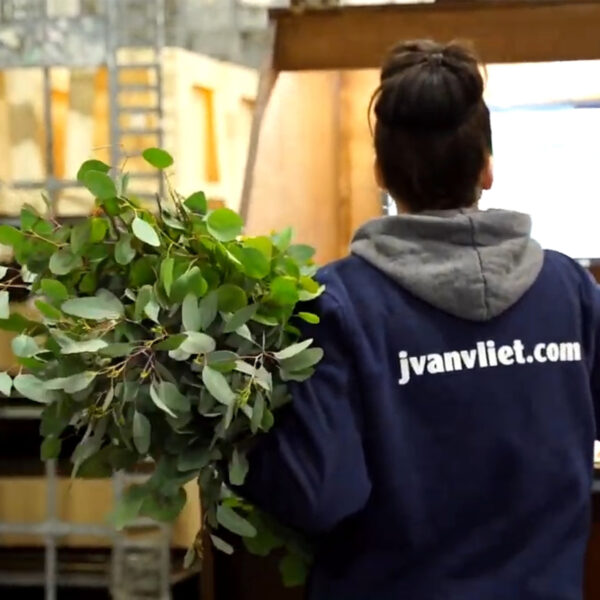
If you buy directly from a grower, is there a different maturity requirement for Dutch growers compared to growers from, for example, Africa or South America?
The requirement is simply that it fits what they say and that is usually the case. An example is Ecuador roses that will never give the maturity stages 2-3 but always 3-3 because they are already more open.
How much time, on average, is there between your moment of receipt of the flowers and that they go out the door again to the customer and your own cash & carries? Has the maturity of the flower changed during that period?
That differs per day of course. On a busy Monday, it takes a little longer than on another day, but we always try to push through the chain as soon as possible. How long that is exactly is difficult to estimate because some customers have early departures and for some customers, this is less important. Also, customers with a lot of handling last longer than those with full buckets and boxes, so it's hard to say. But a peony will be more open at all times if it leaves compared to when it came in.
What requirements do your customers and Cash & Carries place on the maturity of your flowers?
Again, it is important that the information the growers give matches with what's on their receipt.
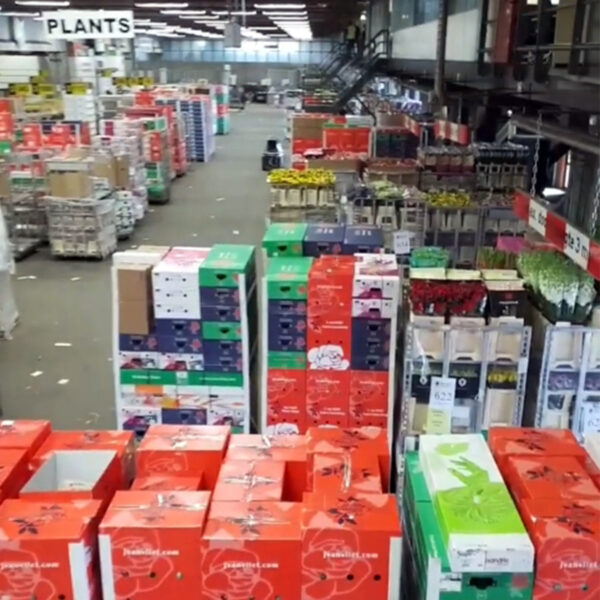
Many growers believe that flowers are stronger if they are allowed to stay on the field longer; they would then have a longer shelf and vase life and bloom more beautifully. The result is that those flowers are delivered riper. Suppose the flowers were delivered one stage riper, what would be the consequences for Van Vliet Flower Group? Do the flowers get more value or less?
This is entirely up to the customer. I can give a good example of this when looking at peonies. Our location in Prague, for example, and more Eastern European countries do not want raw peonies, but rather open ones. The United Kingdom does want raw peonies. So there is actually a market for everything and one grower will deliver in this way and the other in that way. There is not one policy, because one country is not the other and there is a demand for everything. It is often the case that the open varieties get less money because they will have a shorter life after the chain than the ones that still have to open up completely. That is the consequence, so I think most growers deliver a bit rawer. This makes sense to me. So there is not anything like 'should' or 'should not' I think, simply because one wants it like this and the other like that.
What do you want to say as a purchasing manager to growers and retailers on this subject? Do you have any tips or ideas to achieve a better mutual understanding?
I think I already gave a nice answer above. Some growers understand it and some not so much. I have to say that things are getting better and better, but it can always improve, especially in difficult times when things go cheap on the clock. Approach your best exporters and do not always wait for us to call but also call/app them yourself and try to sell as much as possible out of hand so that your clock trade is reduced. This will increase the price because there is less offer left. However, it must be really interesting for the buyer, because otherwise they are quickly inclined to wait a while for a drop at the auction. That way I think we can help each other the most in these difficult times when the trade is down. If flowers are more in demand and everything gets a good price product will sell easily, making this less important.
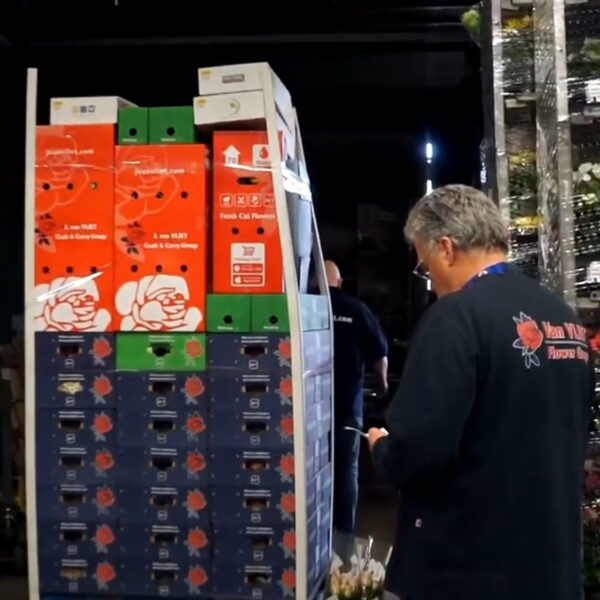
Additional Information About Cutting Stages
Flowers are harvested mainly according to the prescribed auction regulations. In general, Dutch auctions divide the offer at their sales platforms and at the clocks into 5 stages of maturity. These correspond with the cutting stages of growers. • 1 = flower is raw, closed • 2 = flower is slightly open • 3 = flower starts blooming • 4 = flower is clearly open, but not fully. • 5 = flower is fully open You can imagine that some flowers are harvested and sold at cutting stage 5, like anthurium, gerbera, and many spray chrysants. Other flowers need to be cut in a less mature stage, so they will bloom further from there.


